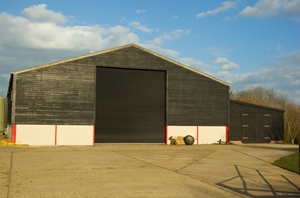
If you own cattle or another type of livestock, it's likely that you have or need a customised barn to house these animals from time to time. Whether for milking, shelter from the weather or perhaps as a stable for your horses, the range of products from Shed Boss can help you create an ideal construction for your farm.
One important aspect of having a custom designed shed for livestock is appropriate waste management practices. An NC State University report discusses this, noting that "if not managed properly, animal wastes from sources such as hog, beef, dairy, horse, poultry, and sheep operations can affect water quality and, potentially, your health".
So with this in mind, let's look at some good practices for managing animal waste in and around your custom designed shed.
Use a pit
A Global Dairy Agenda for Action study from Maharashtra Animal & Fishery Sciences University details pits that make for an effective waste management solution with minimal cost. This style of waste management is called the Nadep compost system, so named after the Indian farmer who developed the system.
The ventilated pits are lined with soil bricks on barren land, and agricultural waste is placed inside with layer of dung slurry and a layer of soil. Over 80 days, a study of this method found all of the waste was converted into compost, with added control over the methane gas output.
This may not be ideal for your farm, but is a method to consider when you have livestock that stay in barns or on a farm.
Reuse for results
Meat and Livestock Australia (MLA) also notes that animal waste can cause significant problems with odour on your farm.
"Good waste management should aim to maintain clean feed and pen areas through the regular removal of waste and the capture and management of run-off during rain events," the organisation's website reads.
Meanwhile, the Victorian Department of Environment and Primary Industries (DEPI) lists reuse as the second best way of dealing with waste, behind only avoidance. So, if your animals are creating waste, then reuse is the preferred way of managing it.
Stockpiling waste from animals is recommended, as it can then be reused as fertiliser on crops and pastures. Spreading it as quickly as possible is also suggested by the MLA. Stockpiling and spreading with haste prevents flies from building up in great numbers. Too many flies in your barn can spread disease and agitate your livestock, which reduces how much they eat. Keep it clean, and keep it clean fast!
Check the density
This is important for general livestock safety as well, but pen density plays an important role in waste management. Make sure the amount of stock in a pen complies with the regulations laid out by the relevant industry body, and there will not be an overflow of effluent. This also makes for easier cleaning of concrete floors when the time comes.
Overflow of waste in dairy sheds can cause problems for waterways, according to the Victorian DEPI. Any discharge to underground waterways must be avoided, and is against the law. In Victoria, you have to work within Environmental Protection Authority guidelines, so check with the equivalent body in your state about best practice for waste management in your area.
With great sheds comes great responsibility – owning and operating a farm can be a rewarding career path, but make sure waste management practices are in place and you won't just be keeping the area clean, you might find some savings by creating your own compost.
To find out about the range of shed and barn designs available from our friendly staff, check out the Shed Boss App and design your own.
